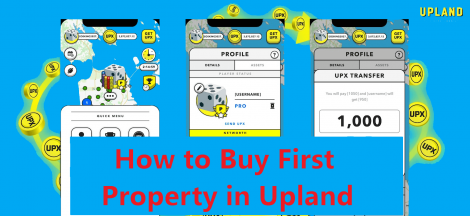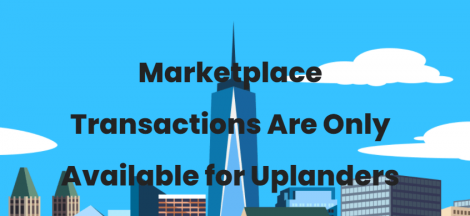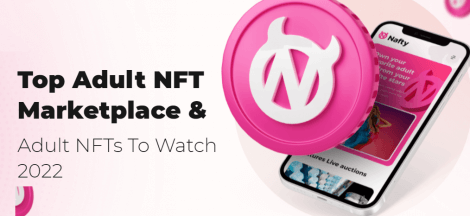For the last five years, Make An App Like has helped founders build tokenization pilots, review smart-contract audits, and launch property-backed marketplaces. Think of this as a classroom session: what an NFT real estate marketplace is, the decisions you must make, the tech that fits, and the guardrails that keep you compliant. By the end, you will have a clear path to ship an MVP in 2025 without costly rework.
What you are building and key choices
An NFT real estate marketplace lets users buy, sell, or fractionalize ownership exposure to property through on-chain tokens. Before writing code, lock these decisions.
- Asset scope: Real properties, virtual land, or both.
- Ownership model: Whole-asset NFTs, SPV shares tokenized as NFTs, or compliant security tokens.
- Jurisdictions: Where assets sit and where users reside; this drives KYC/AML and securities rules.
- Revenue model: Listing fees, marketplace fee (1–2.5%), primary sale fees, and creator/issuer royalties.
- Chains & fees: Ethereum for trust, Polygon for low cost, optional L2 for scale.
Core architecture (what must exist)
- Smart contracts: ERC-721 for unique deeds; ERC-1155 for fractional lots; role-based access; upgrade paths.
- KYC/AML & compliance: Onboarding with IDV, sanctions checks, residency controls, investor status where required.
- Listing & diligence: Title docs, appraisal, escrow terms, risk disclosures, document hashes anchored on-chain.
- Payments & custody: Crypto wallets (WalletConnect, MetaMask), fiat on-ramp, escrow contracts, payout rails.
- Secondary trading: Order book or fixed-price sales with fee capture and transfer restrictions where needed.
- Ops & observability: Admin console, dispute workflows, audit logs, rate limits, monitoring, backups.
Recommended tech stack (battle-tested)
- Frontend: React/Next.js, server-side rendering, Tailwind.
- Backend: Node.js (NestJS/Express), PostgreSQL + Redis cache, message queue (SQS/RabbitMQ).
- Contracts & indexing: Solidity + OpenZeppelin, Hardhat/Foundry, The Graph or custom indexer.
- Storage: IPFS for metadata; store legal docs off-chain with cryptographic hashes on-chain.
- Infra: AWS/GCP, containerized deployment, CI/CD, WAF, secret manager.
- Risk & compliance: Sumsub/Onfido for KYC, chain analytics, geo-fencing, transaction screening.
Build sequence you can follow
- Spec & legal framing
- Define asset type, investor eligibility, and transfer restrictions. Draft T&Cs and disclosures.
- Contract design
- Mint, list, buy/sell, cancel, royalty logic, restricted transfers, emergency pause.
- Data & documents
- Hash title pack, appraisal, and compliance files; link to listings; set verification states.
- Wallets, fiat, escrow
- Connect wallets, add on-ramp, implement escrow release after oracle/registrar checks.
- Admin & moderation
- Approvals, KYC review, blacklist/greylist, fee settings, dispute resolution.
- Security & audits
- Unit tests, property-level caps, reentrancy guards, rate limits, third-party contract audit.
- Beta and go-live
- Closed pilot with 1–2 properties, load tests, incident runbooks, support playbooks.
Compliance checklist (do not skip)
- KYC/AML, PEP/sanctions screening, proof of funds where required.
- Securities analysis (utility vs security); apply transfer restrictions for compliant secondary trades.
- Consumer disclosures: risks, fees, settlement timelines, redemption and buy-back terms.
- Data protection and investor communications archiving.
Cost and timeline benchmarks
- MVP (single chain, KYC, escrow, listings): ~$20k–$40k; 6–10 weeks.
- Growth (multi-chain, advanced compliance, analytics): ~$60k–$100k+; 12–20 weeks.
- Monthly ops: cloud, nodes, storage, KYC, monitoring; plan a few hundred to a few thousand dollars.
Ever since the world faced the detrimental impacts of the Coronavirus, the need for a more connected, transparent, and secure virtual space became more evident. It made everyone talk about things like NFTs, Cryptocurrency, Decentraland, Virtual Reality, Augmented Reality.
The non-fungible token market has expanded vigorously. NFT is transforming a wide range of industry domains with its extensive use cases.
A Popular NFT marketplace is a platform where users can sell and purchase NFTs. The process of trading NFTs requires a digital wallet that stores and remits ETH or crypto coins.
NFT in real estate has the potential to make real estate investors’ lives way easier than it has ever been. It is making storage of ownership credentials protected in a more secure, robust, and decentralized digital infrastructure.
Which Technologies is Used To Make A Metaverse?
The possibilities of piracy or any other malicious attack become nearly impossible as everything is encrypted and structured in a distributed ledger working on the mechanism of consensus.
Real estate investors or purchasers can list, manage and purchase properties through an NFT marketplace.
NFT marketplace development is a fascinating opportunity for business enthusiasts willing to invest in this digital transformation.
This blog post will walk you through the foundational step for creating an Real Estate NFT marketplace.
- Know Your Audience
To begin the development of a platform that interacts with a range of audiences including business owners, NFT enthusiasts, or traders, you just need to understand the similarities and differences in their respective requirements. The process might begin from the product discovery stage. Business professionals within an NFT marketplace development company may handle the process of comprehending extensive, complex, and diverse requirements.
If we talk about a real estate marketplace, among the primary prerequisites can be an intuitive property listing and auction interface. It needs to be designed in a way so it can be used efficiently and effectively.
- Do Market Research
Proper market research before investing your resources into developing a fully-fledged NFT marketplace will allow your business to personalize the customer needs. There can be a different way to execute the research i.e. competitor analysis, following real estate industry-oriented journals, blogging sites, magazines, and a lot more.
The real estate industry is among the most transformative yet aspiring use cases of NFT. Thus, in-depth market research becomes an evident need for the most effective execution of product development plans.
How to Make Money in the Metaverse
- Product Discovery
The main objective of an NFT real estate marketplace is to tokenize real estate assets into non-fungible tokens. It may act like a decentralized real estate auction platform where there is a distributed ledger of data.
NFT real estate marketplace is still an evolving trend in the NFT market. To ensure maximum effectiveness and superior results, you can take the help of an NFT marketplace company. The product discovery allows clients to identify the potential of their product idea and implement a right-to-the-need strategy for effective design, development, and deployment.
Decentralized listings, tokenized economy, and maximum personalization are among the main components of any NFT marketplace project. NFT marketplace developers would need clarity of the determined set of requirements.
Product discovery is a crucial stage that drives the execution of the entire project management plan with the implementation of the most fundamental project components.
- Design NFT Marketplace
NFT is trending and emerging which means there can be extensive and unique ideas to carve rich-featured NFT marketplaces dedicated to the real estate industry. The design of these marketplaces can be interactive and engage in a rich user experience not only to attract a large audience but also to convert them into customers.
A real estate NFT marketplace would act as a hub for trading real estate NFTs that may include real properties, virtual lands, and a lot more. With such a versatile offering, the interface needs to be more diverse and interactive so it would comprehend complex demands easily.
For a more realistic and right-to-the-need marketplace design, it is best recommended to prototype the website with a significant emphasis so you can visualize the client requirements more efficiently.
- Develop UI & Code Features
The user interface will be your NFT marketplace’s face. It should be comprehensive and lightweight so the audience can comprehend your offerings effectively. Among the primary elements of a complete UI package for an NFT marketplace are storefront, token search, search filters, listing, bidding interface, wallet, etc.
You can consult an NFT marketplace development company to finalize the UI design, features, technology stack, and other technical requirements of the project.
To create a fully-fledged NFT real estate marketplace, require the below-mentioned technologies.
- Cloud Hosting Platform
To ensure utmost security in an independent development environment, the NFT marketplace developers can use a cloud hosting platform such as AWS, Microsoft Azure, Google Cloud Platform, Oracle Cloud Infrastructure, etc.
- Database Management System
Secure management of data is the primary security goal of an NFT real estate marketplace development project. It allows the platform to handle high loads of data efficiently. You can use DBMS platforms such as MongoDB, MySQL, and PostgreSQL to initiate a range of data operations.
- Frontend and Backend Platforms
To integrate your UI code, you can use frameworks to create the frontend and backend of your NFT real estate marketplace. You can use extensive libraries and function packages to engage in the fast-paced, effective, result-oriented, and continuous development of your NFT marketplace.
You can use programming languages like JavaScript, Kotlin, Python, Solidity, Swift, and Typescript to create an NFT marketplace on a Blockchain network.
- Implement Blockchain Model
To test and manage the developed Software and implement Blockchain functionalities, we use frameworks like Drizzle, Ganache, and Truffle. Other frameworks to create Smart Contracts are Brownie, Hardhat, and OpenZeppelin.
The market size of Blockchain models, most particularly Ethereum Blockchain, has expanded exponentially in recent years.
A Detailed Guide About Non-Fungible Tokens In Real Estate
- Consider a Use Case
The process of implementing an ideal Blockchain model begins from evaluating the Blockchain platform and defining your project requirements. You have to sync your resources to the project to achieve precise and most favorable outcomes.
- Create Proof of Concept
The next important part of the process is to identify the concept based on which the NFT marketplace would interact with the users and meet their goals. This process may also emphasize the challenges that need to be addressed while using the application.
- Choose Aptest Blockchain
Choosing a Blockchain is not only a technical choice but also a financial investment. To make it worthwhile, you need to do adequate research and attain the intended results.
Some of the most popular Blockchain frameworks include NFT Marketplace For Real Estate
- Ethereum
- Quorum
- Hyperledger
- Fabric
- Stellar
- Corda
- Open Chain
- Multichain
- Set Up The Ecosystem
We can establish a strong Blockchain ecosystem that would identify all important stakeholders within the development project and provide them with the space to understand the governing mechanism and participate in it.
To engage in an effective Blockchain implementation, you may need to some critical challenges as the followings;
- Ensure that it works.
- Work on the loopholes.
- Do not lose the track of it and make it a streamlined call.
- Carve something futuristic.
- Integrate Crypto Wallet
To initiate and complete easy and secure transactions, we integrate crypto-compatible digital wallets like Coinbase Wallet, Fortmatic, MetaMask, MyEtherWallet, Portis, Torus, and WalletConnect. This wallet allows users to execute standard-compliant crypto transactions contributing to the end objectives of selling and purchasing tokenized real estate.
The question is, why do we need a crypto wallet for NFT Real Estate?
Investors can access crypto tokens using a private key that protects their transactions from unauthorized transactions. If you lose private keys, you will also lose the tokens. Keys not only secure your transactions but also provide you
You can manage, control, send, receive, and browse all your transactions more effectively using these wallets. These wallets provide you with a secure infrastructure that helps you indulge in the fast and simple listing of your real estate entities on the NFT structure.
- Testing
Once designed and developed, your real estate NFT marketplace needs to be tested. The outcomes of testing can lead you to some major loopholes that existed in your product. Now, your job is to not only eliminate these loopholes, bugs, or errors but also to consider a more in-depth analysis of the complete product structure and take better calls on the overall project.
The testing process would allow the developers to analyze the functionality and usability of the marketplace interactively and ensure the release and delivery of a result-oriented NFT real estate marketplace.
Post testing, we can launch a beta version of the product which would be released to a limited number of users. It would help you to understand the real-time response of the users and rectify if there are any issues in the application.
The testing process will provide a constructive outcome on what the product is capable of delivering and where it is facing issues to meet the final outcomes.
You can consider an NFT marketplace development guide to comprehend the fundamental process of designing, developing, and testing the application.
- Deploy & Launch
The deployment of Smart Contracts written by Blockchain developers would allow your NFT marketplace to use Blockchain technology in its operations. Real Estate NFT marketplace developers would use deployment scripts to integrate and set up the Smart Contracts on the product and make it user-ready.
Integration of external resources like Crypto wallet plays a crucial role in architecting the final deliverable.
Top 7 Best Real Estate NFT Marketplace
With the modern world’s increasing digitalization, practically everything is moving toward virtual reality. Isn’t it incredible that you can own the home of your dreams with only one click? Let’s take a look at the top 7 NFT real estate marketplaces.
The NFT real estate market is brimming with business options. Decentraland and PolkaCity, for example, have turned the entire procedure into a game. From anywhere in the globe, you may effortlessly purchase, sell, and trade real estate. You can make a lot of money and earn more by investing in the correct bargain.
- OpenSea
- Decentraland
- Cryptovoxels
- Polka City
- SuperWorld
- AtomicMarket
- Upland
The Final Word
NFT real estate marketplace industry is anticipating a boom in its revenues in the upcoming year. NFT enthusiasts across the world have an opportunity to transform the futuristic idea into a capable cryptographic infrastructure encouraging modern-age users for using a decentralized economy.
NFT real estate is an aspiring use case that would not only transform the landscapes of the Blockchain industry but also the traditional finance processes.
The ongoing discussions on Metaverse may further the essence of NFT-based real estate in near future. It is up to the technologists, Blockchain professionals, users, and governments to understand the merits of the NFT architecture, address its demerits if any, and make themselves ready for this futuristic and more democratized process alternative for real estate and trading.
Author Bio
Tom Hardy is a senior web developer who has been working along with a reputed NFT marketplace development company. He takes immense interest in penning down his knowledge and expertise through blogs & journals.
Conclusion
Ship an MVP that is legally framed first, then technically robust: clear asset model, audited contracts, KYC/AML, escrow, and an admin console. Start with a single chain and a small property set, validate demand and operations, then scale listings, chains, and investor tooling. With this order of work, you avoid rebuilds and reach real transactions in 2025.
Not by itself. Most teams use an SPV or a legally binding agreement linking token transfer to off-chain title updates under local law.
Use ERC-1155 or a security-token pattern with pro-rata distribution via scheduled on-chain claims tied to off-chain rent or sale proceeds.
Begin on Polygon for cost and speed. If you need maximum market trust, bridge or dual-list on Ethereum once operations are stable.







 Top 10 Adult NFT Marketplace & Adult NFTs To Watch in 2025
Top 10 Adult NFT Marketplace & Adult NFTs To Watch in 2025